Edition - February, 2012
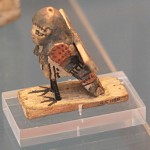
Editorial – Journal Edition 3 and Magazine Edition 4
Welcome to our latest editions of the Journal and Magazine sections. There is a great mixture of topics, which we hope will provide something for everyone. In the Journal section Kate Phizackerley has brought together the results of two excavations in the tomb of Horemheb in the Valley of the Kings, separated by nearly a century, […] [more…]
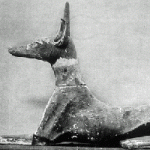
Introduction to the Contents of Tomb KV57 (Horemheb)
KV57, Horemheb’s royal tomb in the Valley of the Kings is famous for its bright decoration but it has yielded a large number of artefacts. The tomb has been excavated twice by Theodore Davis after he discovered the tomb in 1908 and a century later by Geoffrey Martin. This paper brings together findings of both excavations to show that the tomb originall contained an assemblage matching or surpassing that found in KV62, the tomb of Tutankhamun [more…]
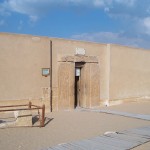
Notes in the margins of the scene termed “rendering accounts” in the mastaba of Mereruka
The mastaba of Mereruka, called Meri, is located at Saqqara, near the pyramid of Teti, next to the pre-existing tomb of his colleague, Kagemni. Both acceded to the post of vizier during the reign of Teti, at the beginning of the 6th Dynasty. The vast building is divided into three parts, sheltering, besides the deceased, his wife Seshseshet (daughter of Teti) and their daughter Meryteti. Those who visit the tomb cannot fail to notice, at the beginning of the circuit, a scene decorating the lower part of the left wall of the long passage that leads to section A reserved for Mereruka. [more…]
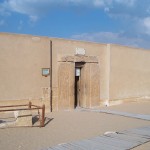
Notes en marge de la scène dite «de reddition des comptes» dans le mastaba de Mererouka
Le mastaba du Mererouka, dit Meri, se situe à Saqqara, à proximité de la pyramide de Teti, jouxtant la tombe préexistante de son collègue Kagemni. Tous deux ont accédé au vizirat sous le règne de Teti, au début de la VIe dynastie. Le vaste bâtiment se divise en trois parties, hébergeant outre le défunt, son épouse Seshseshet (fille de Teti) et leur fille Meryteti. Ceux qui ont visité la tombe n’auront pas manqué de remarquer, en début de parcours, une scène décorant la paroi gauche, dans sa partie inférieure, du long passage menant à la section A réservée à Mererouka. [more…]
Comparison of the stelae of wsrimn (Fisher Collection, Detroit) and of ddwsbk (Louvre C240 and BM566) of Dynasty XII
Abstract
The 12th Dynasty (Middle Egytian) judicial system was surprisingly modern in its approach and composition, but our knowledge is assembled by a process of deduction. Most of the key evidentiary sources are testimonial stelae which list the titles held by senior officials during their lifetimes. The nature of an individual’s role in the judicial process can be postulated from the combination of titles held, in turn allowing a picture of the overall operation of kingly justice to emerge. “The paper considers the titles and history of two such individuals, comparing and contrasting the titles they held to build a picture which reveals the existence of investigative judicial processes. [more…]
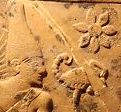
Who Is King Scorpion?
Abstract
The ‘Scorpion’ Mace-head is one of the most significant objects from the main deposit at Hierakonpolis. Unlike the Narmer Mace-head, it is not a complete mace-head but only part of one. Apart from the dominant figure after whom the palette is named, the surrounding scenes are partial; however excellently these have been conserved. This makes the object even more enigmatic and difficult to interpret than usual in the context of the development of Early Dynastic royal iconography. [more…]
This article re-examines the evidence and suggests an alternative identification for King Scorpion. [more…]
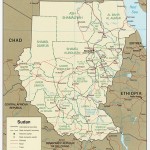
The contributions of A.J. Arkell to eastern Saharan prehistory
Abstract
Anthony John Arkell (1898 – 1979) was a pioneer of Sudanese archaeology, a precise and conscientious surveyor and excavator whose publications are still invaluable today. His work provided the framework within which conversations about the prehistory of the Sudan are discussed. When he returned to live and work in England Arkell was responsible for restoring the collections of the Petrie Museum of Egyptian Archaeology, its contents having been packed into 800 boxes during the Second World War. He went on to research and write about the Egyptian Predynastic, helping to revive interest in the pre-Pharaonic period. Anthony Arkell’s contribution to the archaeology of the Eastern Sahara is explored with reference to both his own publications and to comments made by other researchers about the range and value of his work. [more…]
Shabtis in Croatian Private Collections and Museums
Abstract
Approximately 5,000 Egyptian artefacts are housed in the more than twenty museum and known private collections in Croatia (4,042 in museums and circa 1,000 in private collections) dating from the 4th millennium BC to AD 641. There are 375 shabtis in nine museums and the known private collections in Croatia. Most (346) came from the Pharaonic periods of Ancient Egypt, but an additional 26 shabtis and 3 pseudoshabtis were unearthed during excavations in the territory of the Roman provinces of Dalmatia and Pannonia (today in Croatia). These shabtis were usually connected with the diffusion of the Egyptian cults during Graeco-Roman periods (c. 4th century BC to the 3rd century AD). The largest collection of shabtis is held in the Archaeological Museum in Zagreb (312). These shabtis were collected over a long period of time, from 1865 to today, and from various sources, but most are of unknown provenance. My analysis showed that all shabtis are genuine. They were crafted between the Middle Kingdom (AMZ, inv. no. E-310) and the 3rd c. AD. The following analysis of the shabtis showed that almost all known types and forms of shabtis can be found in Croatian collections. [more…]
The sAb in the Old Kingdom: a consideration of the title within the scope of a prosopographic study
Abstract
The article aims to give an overview of the activities of the bearer of the title sAb in the Old Kingdom and to propose a definition for it. It is based on the analysis of more than 500 documents, citing 76 titles including the term sAb and to collate all these in the titularies of the individuals concerned. It also attempts a brief description of the nature of the functions of the practitioners of justice, citing the autobiography of Weni. It further points up the connections to judicial institutions and the references to actions of a judicial nature, but also emphasises the “non-judicial” spheres involving the sAb. The article formulates a basic structure, centred round the knowledge and practice of law and orientated towards various sectors, such as the administration of the State in its diverse facets, the function of the judiciary and the management of patrimony in the great temples through specialisation. The term sAb could be the hallmark of the title holder in the field of law, but without confining him to the specific function of a sole judge. [more…]
 By Andrea
By Andrea